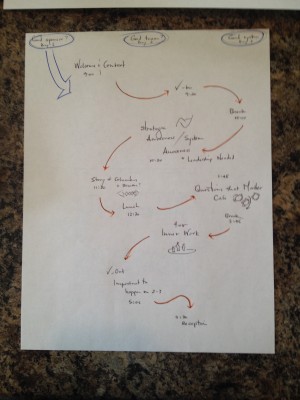Today I leave for this event, on health transformation in Washington State. I’m cohosting it with Paul Horton, Faith Trimble, Teresa Posakony, Phil Cass, Chase Napier, and Judy Hall. I’ll have a few days in Seattle before we begin working as design team on Sunday.
This one is unique in that there is an “Executive Day.” It is an option for participation on the first day only of what is a three day event. Yesterday we had a team call, some of which was focussed on design for this first day in particular. Judy Hall asked the most relevant question, I found, “How to be a good sponsor?”
From the conversation that followed, what I heard and stitched together is several chunks of design.
- We need systems awareness. It’s important that all of us continue to see ourselves in a broadly connected system, even in its complexity, rather than in a widely fragmented system. Isolation is a belief of convenience.
- We need a grounding story. In this case, Phil has much to tell of his experience in Columbus, Ohio. The work must be real, not just hypothetical. People will be able to find themselves in that.
- We need to focus on key questions. It is our questions that will shape the work and the integration of people working on it together. The premise her is that there is nothing as useful as a good question to invite people into learning together.
- We need engagement. The primary purpose of a meeting like this is to have people turn to one another. It suggests that wisdom comes from engagement by the group. It matters that we tell our stories with one another as a way of creating fabric to take on such complexity together.
- We need focus on an inner transformation. Phil says it well. “Unless the inner changes, the inner state of the leader, there is not much that changes or sticks in the outer programs. The programs come and go, each with their value. But there is not getting around the need for our inner change.”
Tack on a welcome and check-in at the beginning, and a good check-out at the end. That’s a good day that might look something like this.

